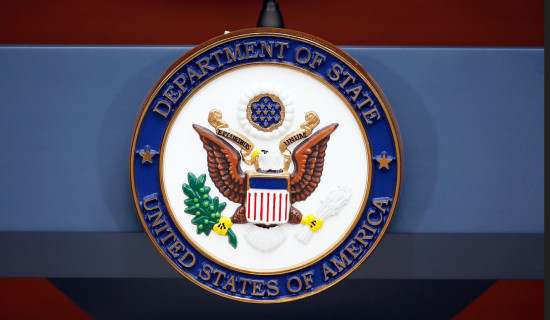- Saturday, 23 August 2025
Empowering Citizens Through Disaster Education
Every country in the world is vulnerable to the devastating effects of natural disasters. And Nepal is not an exception. Recently, the catastrophic floods in the Bhote Koshi river, along the Nepal- China border in Rasuwa district ruined significantly not only to human lives but also critical Miteri bridge infrastructure that once used to link the two countries before being swept away by the floodwaters caused by glacial lake outburst. This bridge served as a major transit point for trade and transportation after Tatopani, which had collapsed during the 2015 earthquake.
Nepal has endured several such deadly calamities during the first quarter of this century – most notably, the catastrophic collapse of eastern embankment of the Koshi river in 2008, which uprooted 45,000 people of three VDCs; the Melamchi flash flood of 2021 and the Kathmandu valley floods of September 2024, which left hundreds of people dead and inflicted massive loss of property and infrastructure. With the beginning of the monsoon, a pervasive fear grips the people. In many places, people cannot sleep throughout the night due to the fear of floods and landslides.
Public concerns
Despite being aware of the devastation caused by previous years' monsoons, preparedness to combat such disasters remains critically lacking, undermining the well-known saying: 'An ounce of prevention is worth a pound of cure'. Public concerns over the current preparedness strategies in this particular juncture of disaster management are growing. They express their dissatisfaction, pointing to the government's efforts, which are widely viewed as inadequate and ineffective in addressing the recurring threats of floods and landslides.
Indeed, the efforts made by the government to mitigate the disaster-related issues are inadequate, but the way people vent their dissatisfaction on social media and digital platforms is not invalid. The positive attitude works more than negative narratives. There are four different stages of the disaster management cycle: prevention and risk reduction, preparedness, response, and recovery with resilience. The role of the government in these is only one part of a coin.
Another part lies in the duties and responsibilities of the citizens. In a democratic regime, it is obvious for citizens to hold their government accountable by raising questions and articulating grievances and expectations towards their representatives, which is a fundamental rights enshrined in the constitution. Constitutional rights always demand duties and responsibilities, which inherently go hand in hand. In this light, how effectively the citizens have upheld their civic duties needs to be examined thoroughly.
The complexities of the disasters are shaped by steep topography, fragile geology, deforestation, poor land use, climate change effects and additional local factors. Being a major actor in disaster management, the government, with its limited technical expertise and financial resources, may not be able to cope with the emergencies that arise suddenly, but it can mobilise the private sector, local communities, NGOs and other stakeholders. In doing so, there must be real time information, effective coordination, transparency and accountability. From a legal perspective, a distinct disaster-related law is already in place along with a separate dedicated autonomous institution.
In order to ensure effective rescue and relief at the time of disasters, the government has established emergency warehouses across all seven provinces and is now going to scale up efforts to expand it to all 293 municipalities, including metropolitan and sub-metropolitan cities. In terms of preparedness, hospitals have been designated to respond effectively in case of human casualties. These represent some of the primary efforts carried out by the state mechanisms to mitigate the impact of disasters. Here, it is essential to answer a pressing question: despite implementing several government policies aimed at mitigating impacts of disasters, why has the perpetual loss of lives and destruction of property not been minimised?
Minimizing loss
Whether it is a natural or human-caused calamity, a government's response to disaster always comes under public criticism. It can be extremely challenging for both the government and the public to manage the natural disasters in their early stages. But man-made disasters are often preventable, provided that local communities remain vigilant and law-abiding. First and foremost, the government's protocols for developing settlements or constructing buildings must be strictly adhered to, without manipulation. Laws and regulations, if followed and enforced, the risks of disasters can be managed effectively. In many places, buildings have been constructed dangerously close to rivers or on steep slopes. Such areas are highly vulnerable to floods and landslides.
Deforestation is largely the result of rule-violating human behaviour. Trees are cut down for personal benefit with little regard for environmental consequences. Knowingly or unknowingly, local individuals set fires in forests during the summer season, causing severe destruction of national assets - trees, valuable medical herbs, wildlife and more. Minimal attention is given to reforestation or the protection of existing plantations. In the name of revenue generation, the unchecked extraction of boulders and sand from the Chure hills and riverbeds has pushed the risk of landslides and floods to an alarming level. Bulldozer-driven road construction, carried out without managing environmental effects in vulnerable hilly areas, has triggered landslides across the country. Local governments must exercise strict oversight and enforce effective monitoring, leaving no space for negligence and corruption.
(The author is a former secretary of the government of Nepal.)

















